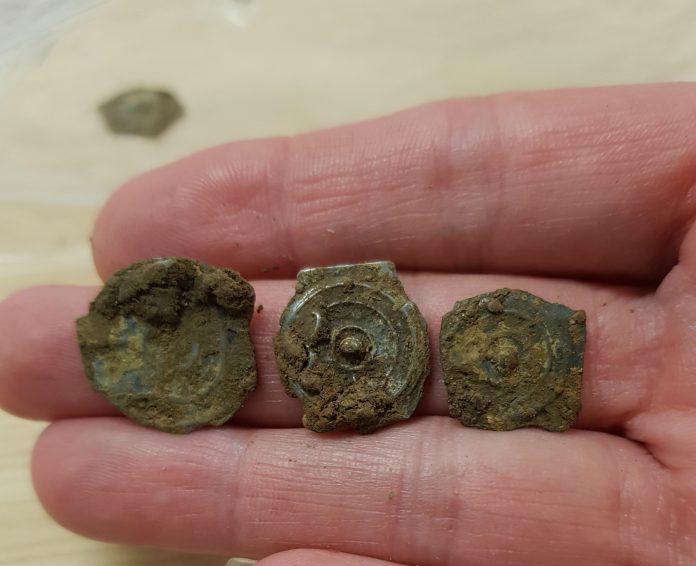Contractor Costain Skanska joint venture (CS JV) and archaeologists working on the HS2 project have uncovered a rare set of Iron Age potins, dating back to the 1st century BC
The hoard of over 300 potins is a significant historical find and was discovered in Hillingdon in August last year (2020).
‘The Hillingdon Hoard’ dates back to the late Iron Age, during a period of change as the Romans began to establish themselves in Britain and create Londinium.
The potins are based on coins struck in Marseille, France, around 2,175 years ago, which bear the left-facing head of Apollo on one side and a bull charging right on the other.
HS2’s head of heritage, Helen Wass said: “At HS2 we are not only building for the future, we are also preserving the past. This is an exciting find for our team of archaeologists and provides us with more information about how our ancestors lived and settled in London.
“HS2’s unprecedented archaeological programme has enabled us to tell the stories of our history and leave a lasting legacy for future generations.”
Archaeologists analysing the discovery believe the potins may have been to mark the boundary of a property or as an offering to the Gods.
The site in Hillingdon was undergoing archaeological excavation and analysis led by HS2’s enabling works contractor, Costain Skanska JV.
‘A once in a lifetime find’
Emma Tetlow, historic environment lead for HS2’s main works contractor Skanska Costain STRABAG joint venture, said: “We were coming to the end of our archaeological work on the site when we found a patch of soil that was a very different colour from what it would be expected to be.
“The patch of soil was dark greeny-blue which suggests oxidized metal, and when we checked more closely, we could see loosely packed metal discs.
“This is a once in a lifetime find, and allows us to expand our knowledge of what life could have been like in Hillingdon many centuries ago.”
A local coroner will determine whether the discovery amounts to ‘treasure’ after considering specialist evidence from the British Museum.
Duncan Wilson, Historic England chief executive, commented: “They say that money talks so what can this unexpected discovery tell us? It takes us back to the tumultuous time of Julius Caesar’s conquest of Gaul.
“Reaching Britain in 55 and 54 BC he observed the locals using ‘bronze’ coins, an innovation they had adopted not long before through cross-channel migration and trade.
“Hoards like this are now protected by law so that they can be studied to learn more about how these early coins were used, and perhaps shed light on why they came to be hidden in a seemingly remote place.
“Extensive projects like HS2 will always bring about archaeological discoveries which is why Historic England works with HS2 to ensure thorough surveys and investigations.”











![[VIDEO] Cambridge waste water plant granted permission to relocate Artist impression of the new Cambridge waste water plant and surrounding land](https://www.pbctoday.co.uk/news/wp-content/uploads/2025/04/p.151-768x364-1-218x150.jpg)


